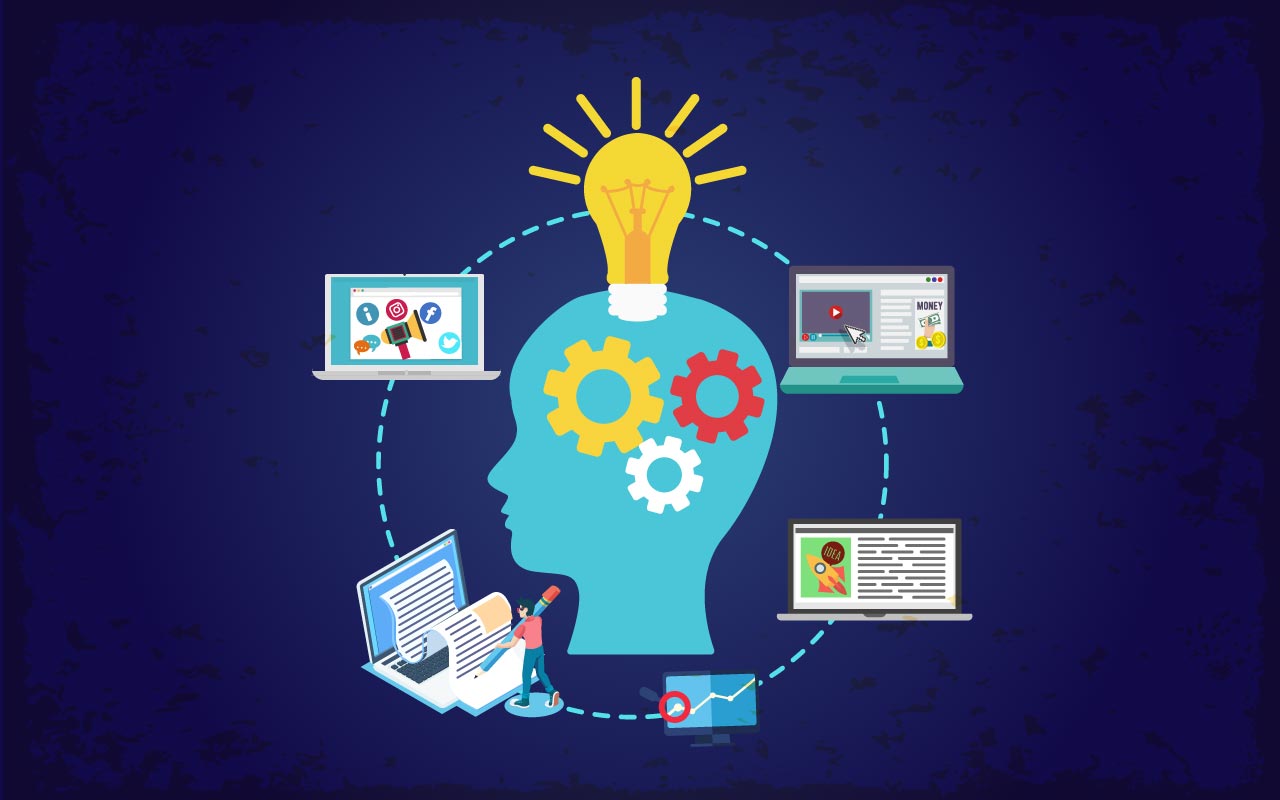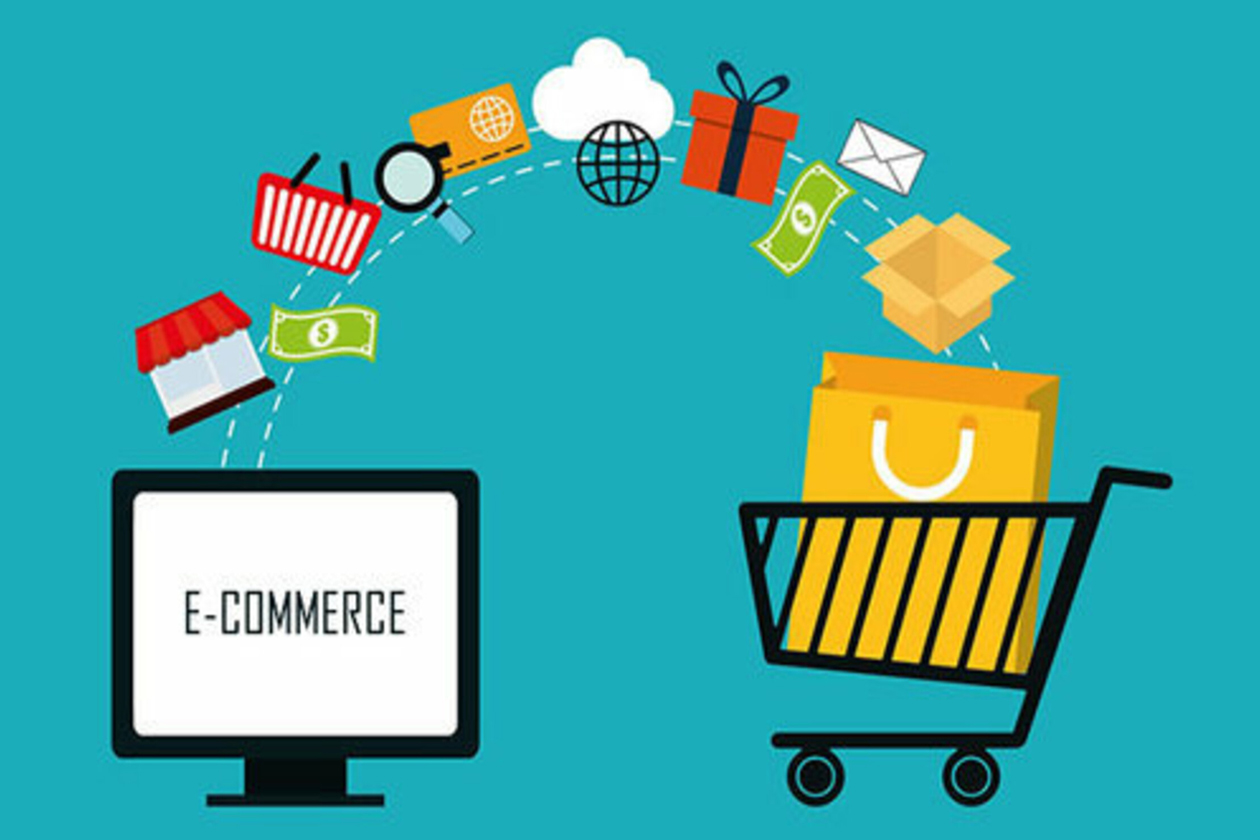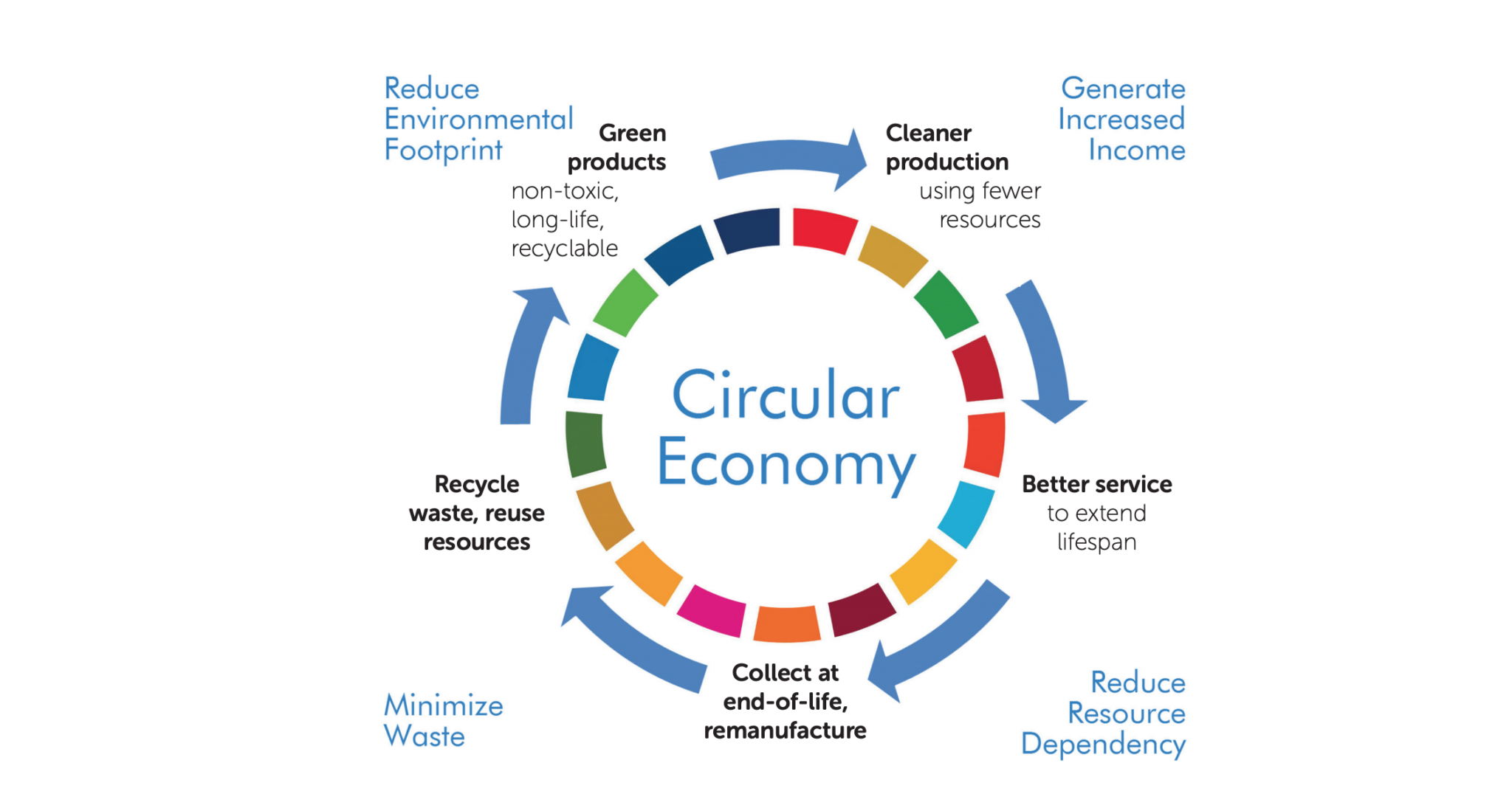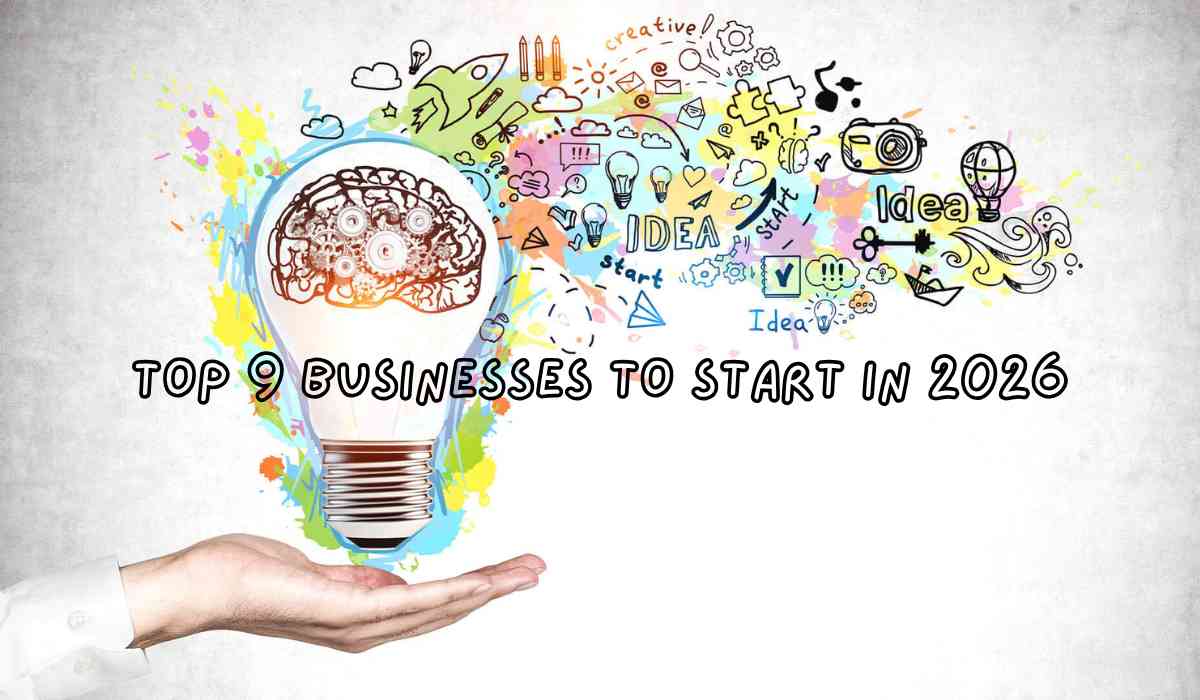From AI breakthroughs and immersive tech to evolving customer expectations and climate-conscious consumerism, the business world is undergoing a dramatic transformation. Whether you're part of a lean startup or a Fortune 500 enterprise, staying ahead of the curve means keeping a close eye on the trends that are reshaping operations, workforce dynamics, customer experiences, and even the planet.

Top 9 Businesses to Start in 2026
- Generative AI: Powering a New Wave of Productivity
Generative AI is no longer a niche concept; it now commands nearly 30% of the entire AI market, valued at around $60 billion. Consumers are catching on, too — nearly 70% believe that businesses will soon be leveraging generative AI to enhance customer experience. This isn’t just speculation. Businesses across industries are actively using generative AI models powered by large language models (LLMs) to boost productivity and output.
LLMs like BERT analyze contextual patterns across billions of pages of text to generate everything from summaries to full-length content. Some, like GitHub’s Copilot, are revolutionizing the software development space by offering AI-generated code completions — with 40% of the code in certain files now written by Copilot itself. Cursor AI, a newer tool, is trending sharply for similar reasons, helping developers (and even non-developers) write entire programs more efficiently.
In healthcare, startups like Syntegra are using AI to generate synthetic patient data that mimics real patient information — without compromising privacy. This dramatically accelerates clinical research and makes data-driven healthcare more affordable.
Even advertising is undergoing an AI-driven transformation. Google and Meta are building AI tools that will allow advertisers to generate new copy, visuals, and videos automatically from uploaded materials — bringing automation and creativity together.
With predictions that generative AI will be producing "final draft" content by 2030, businesses are not just experimenting with AI — they are betting on it as a cornerstone of future strategy.
Also read: What’s Next in Cyber Security? 10 Big Trends and Surprising Challenges in 2025
- E-Commerce Expansion: The New Normal
E-commerce continues to thrive even as the post-pandemic world settles. While it saw explosive growth during COVID-19 — with Shopify reporting a decade's worth of growth in just three months — the sector is still rising steadily. Global e-commerce sales hit $6.9 trillion in 2024 and are expected to reach $8.1 trillion by 2026.
In 2023, e-commerce made up over 22% of all retail sales — a sharp climb from 14% in 2019. Specific categories like electronics, home improvement, and furniture have maintained strong growth. Furniture e-commerce alone generated $149 million in 2022 and is expected to grow to $208 million by 2025.
Major players like Disney have doubled down on e-commerce by integrating it directly into their digital platforms. Disney+ now allows subscribers to scan QR codes during shows and purchase exclusive merchandise through in-app stores — a creative blend of entertainment and commerce.

- 5G + IoT: Revolutionising Business Intelligence
The rollout of 5G — now live in over 500 U.S. cities — is transforming industries by enabling ultra-fast, ultra-reliable connectivity. Its sub-10ms latency and high speeds are the backbones of real-time data operations, automation, and AI integration.
For instance, BMW uses 5G and AI in its Leipzig factory to track tools and vehicles down to the centimeter. T-Mobile's 5G-enabled hospital in Miami allows seamless access to medical records and supports telehealth solutions. Meanwhile, IBM is testing IoT sensors to assess civil infrastructure, potentially unlocking $2 trillion in backlogged repairs.
In agriculture, 5G-powered IoT tools are emerging to monitor soil, pest activity, and livestock health. Lely’s “cow-recognition system” already collects real-time data from animals to optimize farm operations — and such use cases are only expected to expand as 5G connectivity scales.
- Remote and Hybrid Work: A Lasting Workforce Shift
The remote work movement that surged during the pandemic is proving to be more than a temporary shift. By 2022, half of U.S. workers with remote-eligible jobs had adopted a hybrid model, and 30% worked fully remotely. Searches for “hybrid work” have risen over 525% in five years.
Surveys show employees are firmly in favor of flexible work options. More than two-thirds say they’d consider switching jobs if forced back to the office full-time. Many are even willing to accept pay cuts — up to 11% — to maintain flexibility. On average, remote workers save hundreds of dollars each month compared to office-goers.
Despite these benefits, businesses are grappling with concerns about productivity. In fact, 85% of leaders say remote work challenges their confidence in employee output. This has led to a rise in employee monitoring tech — including keystroke trackers and facial recognition systems. Gartner reports that 70% of large corporations have now adopted some form of monitoring software.
-1_1750925693.webp)
- Social Media, Community, and Commerce: The New Marketing Playbook
Social media is more than just a marketing channel in 2025 — it’s a full-fledged ecosystem for commerce, community building, and brand loyalty. With over 5.24 billion users globally, businesses are allocating larger portions of their budgets to platforms like TikTok, which has proven to be 23% more memorable than traditional TV ads.
But the strategy goes beyond ads. Brands are building communities using micro-influencers, who enjoy a 60% higher engagement rate and 2x better conversion compared to mega-influencers. As a result, social commerce — where transactions happen directly on social media — is surging. China leads the way with 14.3% of online sales happening via social commerce, while the U.S. is catching up, predicted to hit $1.2 trillion in this space by 2025.
- Sustainability and the Circular Economy: A Non-Negotiable Priority
Sustainability is no longer a nice-to-have; it’s a business imperative. A growing majority of consumers — 85% globally — have altered their buying habits to reduce environmental impact. Over 62% are willing to change how they shop, and half are ready to pay more for sustainable products.
Companies are responding with environmental, social, and governance (ESG) initiatives. While only 22% report strong ROI today, optimism is high, especially in transportation and power sectors. One major trend is the shift from a linear to a circular economy, where products are reused and recycled.
A great example is UK-based Teemill, which enables sustainable, on-demand t-shirt printing. Customers can return worn-out shirts, which are then recycled into new clothing — a fully circular process.

- Immersive Technologies: The Next Frontier for Consumer Engagement
The immersive tech market — including AR, VR, and MR — is projected to surge from $28 billion in 2021 to $252 billion by 2028. With Meta and Apple investing thousands of employees into XR development, the race is on.
Consumers are showing clear interest. AR-enabled experiences, such as trying on lipstick or placing virtual furniture in their home, are increasing conversions by up to 20%. Pinterest’s “Try On for Home Decor” feature has led to consumers being five times more likely to purchase.
Even the workplace is going immersive. Gartner predicts that 10% of employees will soon use the metaverse for collaboration. Companies like Duolingo are leading the way with gamified brand experiences in platforms like Roblox and Decentraland.
- Last-Mile Delivery: Innovation Under Pressure
The pandemic highlighted massive inefficiencies in supply chains — especially in last-mile delivery, which alone accounts for 41% of costs. Today, consumers expect faster delivery than ever, with 80% preferring 1–2 day shipping and 30% willing to pay extra for same-day service.
Drone delivery, long discussed, is finally becoming reality. Amazon, Wing (Alphabet), and Flytrex are among the companies piloting drone operations. Wing alone has made over 250,000 deliveries, and studies show drone delivery could inject nearly $200 million annually into local economies like Dallas.
LogiNext is using AI to optimize delivery routes and increase operational efficiency. Their SaaS platform now supports over 500 million orders annually, proving that smart logistics can dramatically improve customer satisfaction.

- AI-Powered Customer Experience: Smart Service at Scale
As competition intensifies, customer service is becoming a major battleground — and AI is leading the charge. 70% of businesses believe service quality directly affects performance. Salesforce reports an 88% increase in AI adoption in customer support since 2020.
AI-driven systems can now handle 65% of tasks in a customer care setup, leading to both cost savings and improved experience. Companies using AI report 3.5x higher gains in customer satisfaction.
Camping World’s use of IBM’s virtual assistant, Arvee, slashed call wait times and increased engagement by 40%. Forethought’s AI solution for Uncommon Goods reduced chat/email volume by almost 50% and saved $18,000 per month.
Spending on AI for customer service is expected to reach $2 billion this year, with anticipated cost savings of over $80 billion by 2026.
Final Thoughts
The business landscape in 2025–2026 is characterized by deep technological transformation, growing environmental responsibility, and evolving consumer behavior. From AI to AR, e-commerce to sustainability, the companies that succeed will be those that not only stay informed but act decisively on these trends.
Innovation isn’t just about staying current — it’s about staying competitive. And in a world where everything from logistics to lipstick can be optimized with technology, the future belongs to the agile, the aware, and the bold.
With inputs from agencies
Image Source: Multiple agencies
© Copyright 2025. All Rights Reserved Powered by Vygr Media.

























